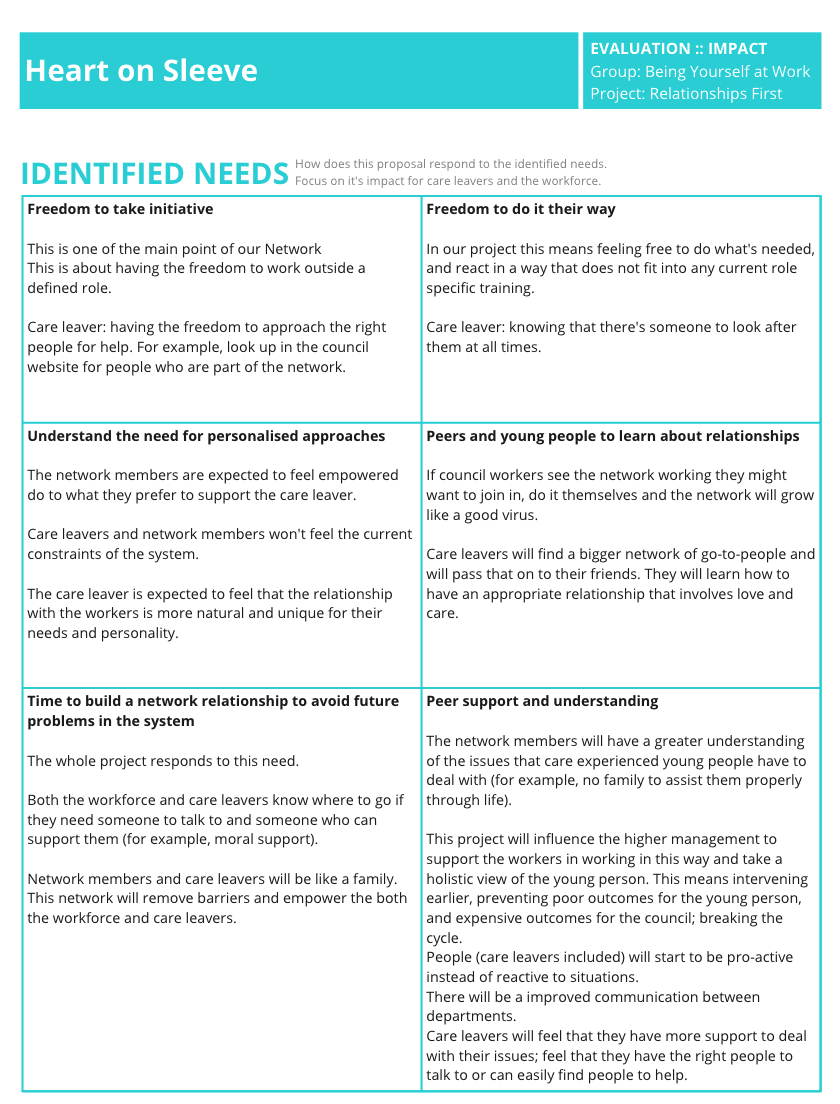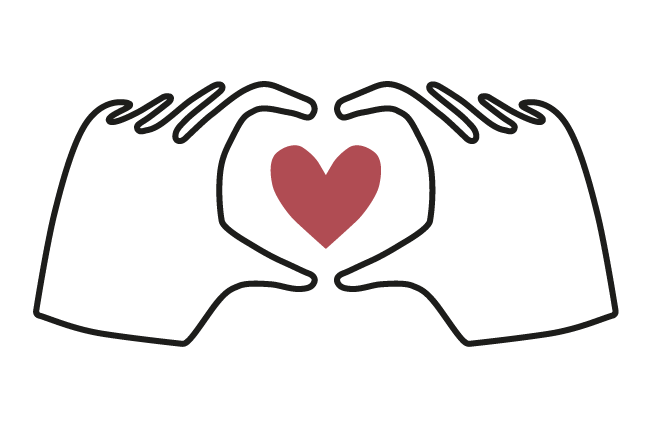Evaluating Heart on Sleeve

The final stage of our creative process involved thinking about the potential impact of our service design concept and we started by reflecting on each need identified by us in Siobhan’s journey.

Anticipated Service Design outcomes
At the start of this project the Co-Design Crew described the behaviours and experiences that people interpreted as loving and being the kind of relationship they were looking for. We’ve returned to them and identifed the experiences we think this service design concept creates space for.
For the workforce they include:

- We can help
- We believe in you (and mean it)
- We understand the bigger picture and how it relates to behaviours
- We’ll be there when care leavers need us through everything
- We’ll think the best of care leavers- help them improve

- I love you
- I accept you as you are
- What’s your opinion (asking)
- When you do… it makes me feel…
- I am here for you if you want to talk

- Helping you be heard by listening, enquiring
- Breaking boundaries (having permission to push professionalism)
- Not giving up- being there for life unconditionally
- Celebrating and congratulating
- Practical and emotional help- allowing care leavers to make mistakes
Reviewing the Corporate Parenting Service Design Principles
Service Design Principles are a set of considerations that help people make decisions while they are designing services and evaluate what they’ve designed. These Seven Corporate Parenting Service Design Principles were created after synthesising the Co-Design Crews research findings.


1. Design for Reciprocity
Relationships are a two-way street. Does our service design invite and enable people to connect as humans and care for one another?

2. Design for parental approaches and roles
We don’t need to go the extra mile, they are one of our own. Does our service design enable Corporate Parents to be educated about and explore their parental approaches?

3. Design for Love
Love is a set of behaviours which are felt. Does our service design enable Corporate Parents and care leavers to understand what love looks like in their relationship and support this in practice?

4. Design with sensitivity to time and timing
Quality and meaning trumps quantity without feeling. Does our service design recognise that life doesn’t happen between 9-5 and enable people to connect in a way that is meaningful to them?

5. Design for where people are at and going
We are always learning in relationships. Is our service design sensitive to the different starting points people are at and who they are becoming, not where we presume or expect them to be because of their age, gender or role?

6. Design for saftey and trust
Safety is an illusion never to trust. Does our service design offer opportunities for people to challenge perceptions of organisational rules and unhelpful thinking patterns? To develop trust and negotiate the natural ebb and flow between people’s boundaries in a relationship?

7. Design to enable vulnerability and connection
Vulnerability is having the courage to show up and be seen when you have no control over the outcome. Vulnerability is a risk we have to take if we want to experience connection. Does our service design enable people to be themselves and enjoy connecting?
After reflecting on how our concept met each design principle we determined that we met all the design principles and have identified three levels of alignment.
As presented in the image below our project responds in full to the principles: ‘Design for reciprocity’, ‘Design for parental approaches’, ‘Design for safety and trust’, and ‘Design for vulnerability and connection’.
An intermediary connection was identified in ‘Design for where people are at and are going’, and lastly (but still with a high score) were the principles: ‘Design for Love’ and ‘Design with sensitivity to time and timing’.
Is Heart on Sleeve Transformational Change?
Finally, we discussed the type of transformation we expected to generate with Heart on Sleeve by using the Three Horizon Model. We have identified the second horizon as our goal for transforming the system to fulfil our vision by supporting the workers of the Council to be themselves at work. This horizon refers to exploring and discovering new ways of moving forward which aligns with our Heart on Sleeve Network that will seed and grow a relational-based practice aimed at caring for our care leavers as we would our own children.
